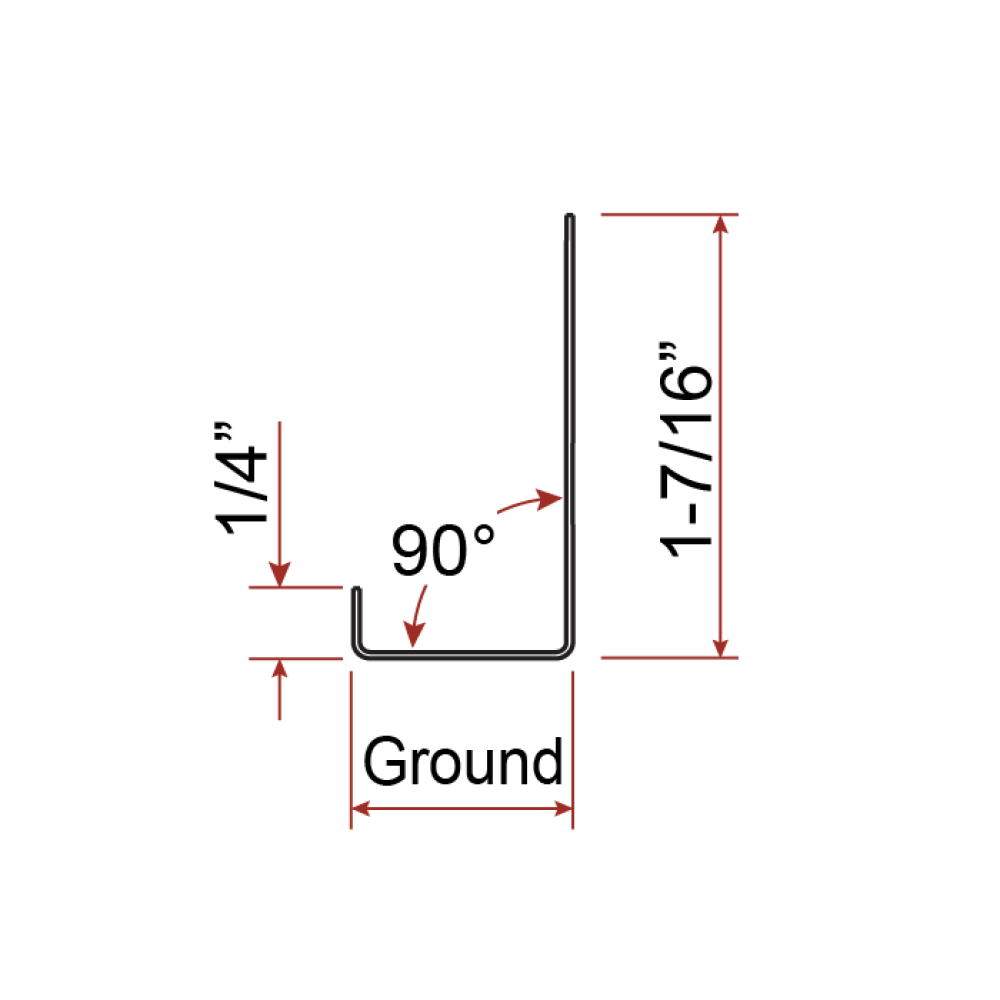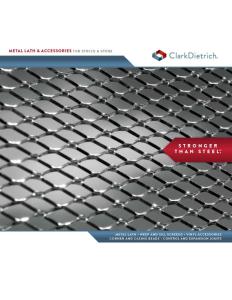


Short flange casing bead to terminate stucco or plaster edge
Used as a stucco/plaster stop to provide a screed edge and protective finish trim while terminating plaster in a clear, straight line at windows, doors, and other openings.
The #66N is recommended as a divider at the edge between plaster and other dissimilar materials. When used in conjunction with metal lath, the 66N is installed under the lath.
The #66N short flange is used under regular corner reinforcement conditions where an expanded flange is not required. Available with or without weep holes. Also available in zinc alloy.
Galvanized steel products should not be used with magnesium oxychloride cement stucco or Portland cement stucco containing calcium chloride additives. The selection of the appropriate type of material for accessories shall be determined by the surrounding climatic and environmental conditions such as salt air, high humidity, and industrial pollution.
Product Data & Ordering Information
| Product Code | Ground | Length | Pcs./Ctn. | Ft./Ctn. | Wt./Ctn. | Ctn./Skid |
|---|---|---|---|---|---|---|
| SFCB | 3/8" | 10' | 30 | 300' | 46 lbs. | 20 |
| 1/2" | 10' | 30 | 300' | 46 lbs. | 20 | |
| 3/4" | 10' | 30 | 300' | 49 lbs. | 20 | |
| 7/8" | 10' | 30 | 300' | 54 lbs. | 20 | |
| 1" | 10' | 30 | 300' | 56 lbs. | 20 | |
| 1-1/4" | 10' | 30 | 300' | 60 lbs. | 20 |

Documents
Code Approvals & Performance Standards
- ASTM A653 Standard Specification for Steel Sheet, Zinc-Coated (Galvanized) or Zinc-Iron Alloy-Coated (Galvannealed) by the Hot-Dip Process
- ASTM C1063 Standard Specification for Installation of Lathing and Furring to Receive Interior and Exterior Portland Cement-Based Plaster
- ASTM C1861 Standard Specification for Lathing and Furring Accessories, and Fasteners, for Interior and Exterior Portland Cement-Based Plaster
- SDS For ASTM A653 Steel Finishing Products For Interior Finishing and Exterior Finishing
Caution:
Suggestions for installation precautions when installing two-piece expansion joints and double casing beads used as double expansion joints: ASTM C1063 requires that double casing beads used as a movement joint “with a flexible barrier membrane behind the casing beads.” It is Clark-Dietrich’s opinion that all two-piece joints whether made from double casing beads or as a manufactured two-piece joint should be installed with the flexible peel and stick membrane behind the joint and it is further recommended that they be filled with backer rod and a highly elastic top quality sealant.
PRoduct submittal SHeets
Click the below Product Code to view Submittal/Tech Datasheet.
| Product Code | Description |
|---|---|
| SFCB | #66N Short Flange Casing Bead |
ClarkDietrich SubmittalPro®
Submittal sheets for the exact product you're looking for can be created by using ClarkDietrich's SubmittalPro® Product Submittal System.
- Contact ClarkDietrich Technical Services at 888-437-3244 for any questions about creating product submittals or using SubmittalPro.
